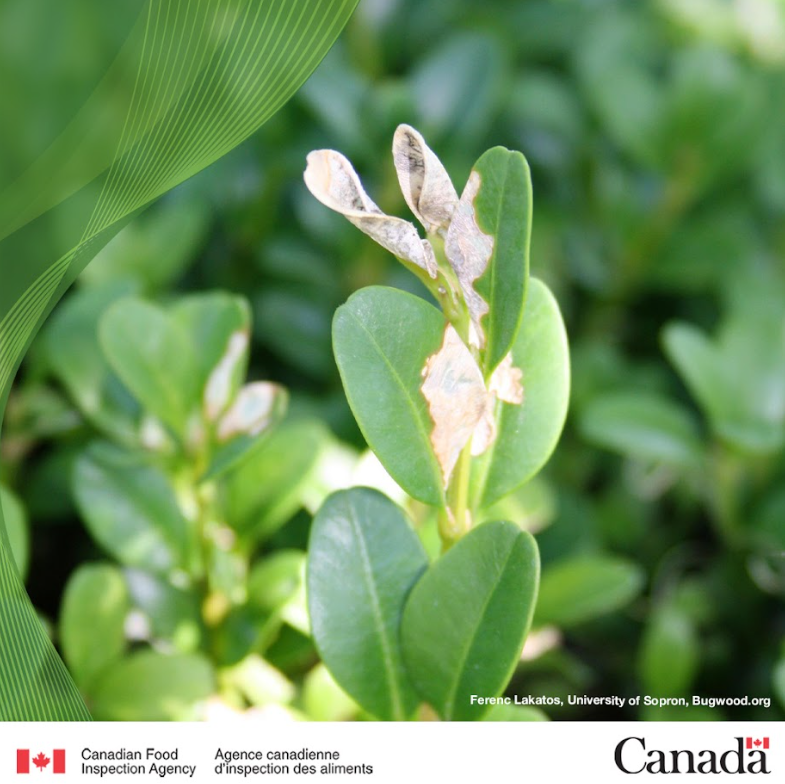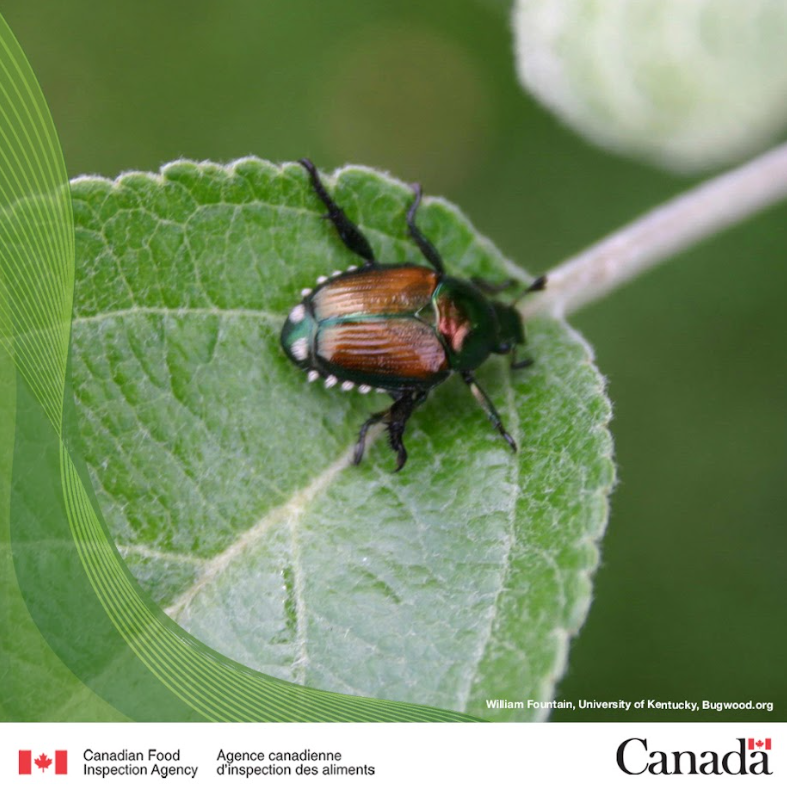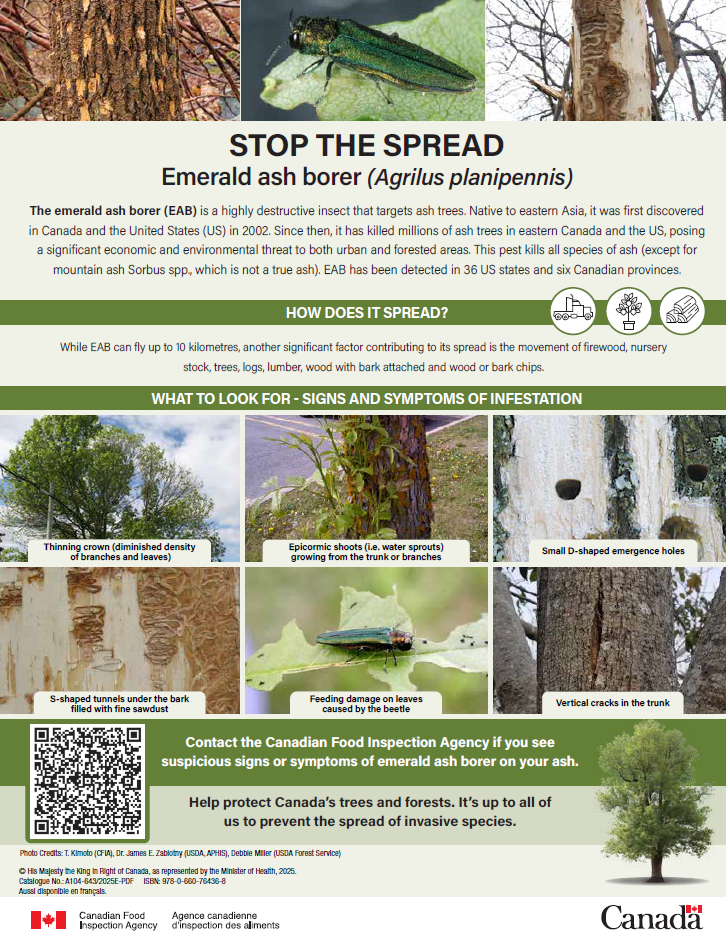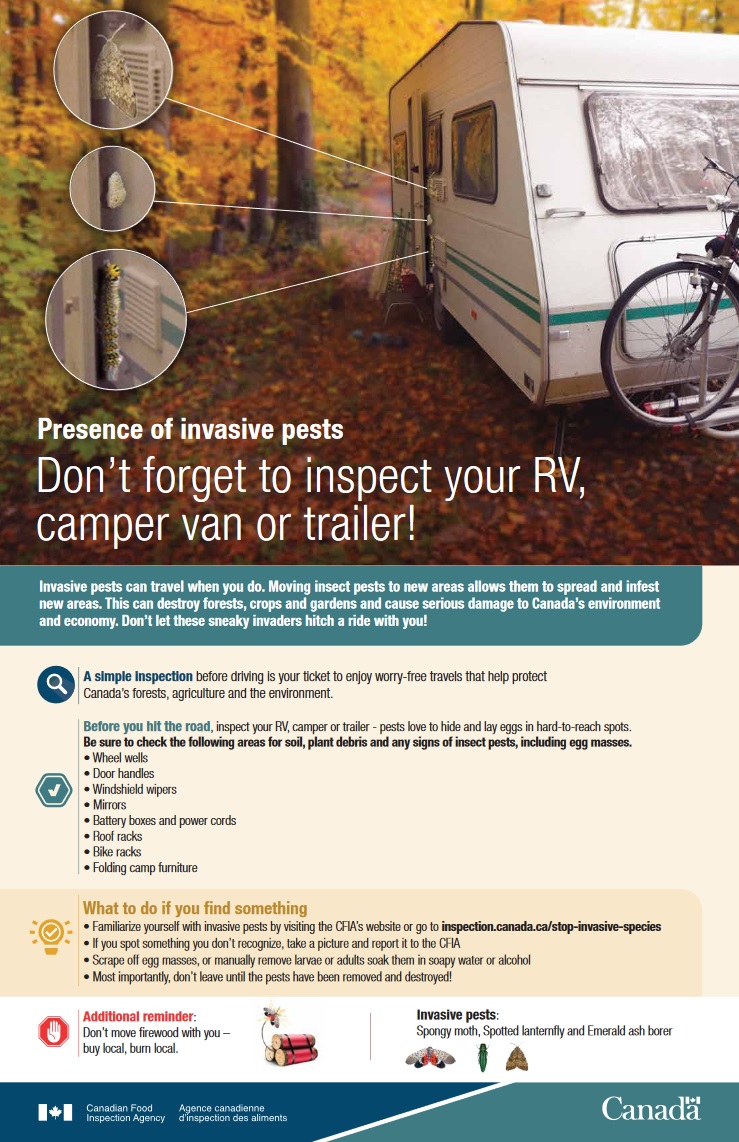Materials and resources that can be shared with your audiences to help raise awareness about invasive species in Canada. Join us in our mission to "Stop the Spread" and protect Canada from invasive species!
Remember, if you spot something you don't recognize, take a picture and report it!
On this page
- Brochures and posters
- Videos
- Social media
- Infographics
- Articles
- For kids
- Resources from our partners
- Contact us
Brochures and posters
Don't move firewood posters:
Videos
These videos can help raise awareness about plant health and invasive species in Canada.
- A sustainable future rooted in healthy soil
- Technology in the wild
- Get involved in Tree Check Month
- Drone's eye view: on the lookout for kudzu
- Pass the Mic: talking about emerald ash borer signs and symptoms
- Camping: what's the deal?
- Travel smart: The CFIA's top tips to keep your RV pest-free this summer
Social media
Important note on using our photos: We are pleased to offer a selection of visuals for your use on social media. For copyright reasons, these images must be used as is. We ask that you do not modify, alter, or edit them in any way.
Spotted lanternfly

Keep spotted lanternfly out of Canada.
This invasive species can hitch a ride on cars, campers, camping gear, firewood and anything travelling with you.
Spot it? Snap it, catch it and report it.
Oak wilt

Are the leaves on your oaks changing colors and it's not fall? Your trees might be under attack by oak wilt, a disease that can kill a tree within a single season.
Don't prune between April and November. Learn about the other signs and symptoms. If you see something, report it to the CFIA. Stop the spread: It's up to all of us!
Box tree moth

Boxwood is a popular shrub in Canada, but it is also a delicious meal for the box tree moth. From May to September, inspect your boxwoods for signs and symptoms of this invasive species. If you see something outside of Ontario, report it to the CFIA.
Stop the spread: It's up to all of us!
Japanese beetle

Japanese beetle can cause serious harm to nurseries, farms, lawns, landscapes, gardens, parks, and the horticultural and agricultural sectors.
If you live in British Columbia lower land, keep an eye out and report it to the CFIA.
Stop the spread: It's up to all of us!
Emerald ash borer

Emerald ash borer is an invasive beetle that has already killed millions of trees across North America.
Help us stop the spread. Look for signs like S-shaped lines under the bark or D-shaped holes in the tree.
If you see something, report it to the CFIA.
Stop the spread: It's up to all of us!
Plum pox virus

Plum pox virus is a serious plant disease that threatens Canada's stone fruit industry, including peaches, nectarines, plums, and apricots.
Specific regulations apply in the Niagara Region and the City of Hamilton. However, plum pox virus is a threat everywhere in Canada.
Contact the CFIA if you find it in an area where it is not known to occur.
Stop the spread: It's up to all of us!
Spongy moth

Spongy moth destroys trees by eating their leaves.
Don't let invasive species like spongy moth hitch a ride. Inspect your campers, trailers, RVs and any equipment for signs of this pest.
If you see something, report it to the CFIA.
Stop the spread: It's up to all of us!
Hemlock woolly adelgid

Hemlock woolly adelgid is an aphid-like insect that attacks and kills hemlock trees. Its egg sacs, which look like cotton balls or clumps of snow, can be found at the base of needles.
It can be spread by wind or animals. It can also be spread by the movement of nursery stock, logs, and other wood products, including firewood.
If you see something, report it to the CFIA.
Stop the spread: It's up to all of us!
Jointed goatgrass

Help stop the spread of jointed goatgrass.
This invasive species resembles common grasses, but has narrow cylindrical spikes and evenly spaced hairs extending from its leaf blades.
After your activities, brush off and check your clothes, shoes, pets and equipment to keep it from spreading.
If you see something, report it to the CFIA.
Stop the spread: It's up to all of us!
Japanese stiltgrass

Japanese stiltgrass is an invasive plant found in forests, wetlands and disturbed areas. It affects native plants, bird nests and other wildlife.
Before leaving parks and pathways, in southern Ontario, brush off and check your clothes, shoes, bike tires and pets.
Stop the spread: It's up to all of us!
Infographics
Articles
- Don't bring uninvited guests with you this winter
- Report plant pests to help protect Canada's plant resources
- Hemlock woolly what?
For kids
Resources from our partners
Awareness on the damage invasive species can have is a group effort. Here are some helpful resources from our partners.
Contact us
We welcome feedback on the toolkit.













